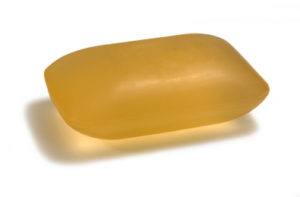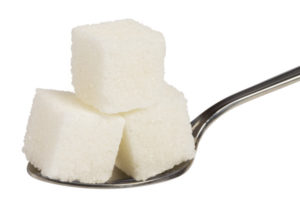 Another piece of the puzzle on how the brain ages. Vitamin B12 is important for brain health, and higher levels are associated with slower rates of brain changes associated with aging. And the opposite is true with homocysteine levels - increased levels are associated with faster rates of brain changes that are associated with aging (such as higher rates of total brain tissue volume loss). Keep in mind that these effects were modest, but this also raises the question of whether long-term B12 supplementation would benefit everyone or only those with a deficiency? From Medscape:
Another piece of the puzzle on how the brain ages. Vitamin B12 is important for brain health, and higher levels are associated with slower rates of brain changes associated with aging. And the opposite is true with homocysteine levels - increased levels are associated with faster rates of brain changes that are associated with aging (such as higher rates of total brain tissue volume loss). Keep in mind that these effects were modest, but this also raises the question of whether long-term B12 supplementation would benefit everyone or only those with a deficiency? From Medscape:
Vitamin B12 May Slow Brain Aging
Individuals with increased levels of circulating homocysteine have faster rates of brain changes associated with aging than other people, whereas higher levels of vitamin B12 are associated with slower rates of brain aging, new research suggests.
Babak Hooshmand, MD, PhD, Center for Alzheimer Research–Aging Research Center, Karolinska Institutet, Stockholm, Sweden, and colleagues found that total brain volume losses were lower in individuals with higher baseline vitamin B12 levels, whereas the opposite was true of those with increased homocysteine levels.
"Vitamin B12 and tHcy [total homocysteine] might be independent predictors of markers of brain aging in elderly individuals without dementia," the investigators write. They add, "[I]f the association is causal, supplementation with B vitamins may be effective for prevention of brain damage due to increased levels of total homocysteine. Adequately timed and powered randomized clinical trials are needed to determine efficient treatment guidelines." The research was published online April 27 in JAMA Psychiatry.
The researchers examined data on 501 participants aged 60 years and older from the Swedish National Study on Aging and Care, in Kungsholmen. All participants were free of dementia at baseline. Of these, 299 underwent repeated structural brain MRI between 2001 and 2009....Venous blood samples were collected at baseline, from which circulating levels of vitamin B12, red blood cell folate, and sulfur amino acids were determined. These were correlated with changes in brain tissue volumes and total white matter hyperintensity (WMH) over 6 years.
He also pointed to the single-center, randomized VITACOG study, in which 271 individuals older than 70 years who had mild cognitive impairment received supplementation with high-dose folic acid and vitamins B6 and B12. "They lost less brain compared to people who had normal homocysteine and normal vitamin levels, meaning that those with high levels of homocysteine or with clinical or biochemical vitamin deficiency can benefit from supplementation," said Dr Hooshmand.

 Increasing fruit and fruit juice consumption during pregnancy leads to better cognitive development in babies?
Increasing fruit and fruit juice consumption during pregnancy leads to better cognitive development in babies?  We've all heard of immunotherapy as a possible future treatment for many cancers, but other possible treatments are also being tested. Two possibilities caught my eye.
We've all heard of immunotherapy as a possible future treatment for many cancers, but other possible treatments are also being tested. Two possibilities caught my eye. Try to avoid triclosan. Read labels (especially soaps, personal care, and household cleaning products) and avoid anything that says it contains triclosan, or is anti-bacterial, anti-fungal, anti-microbial, or anti-odor. We easily absorb triclosan into our bodies, and it has been detected in our urine, blood, and breast milk. Among its many negative effects (e.g.,
Try to avoid triclosan. Read labels (especially soaps, personal care, and household cleaning products) and avoid anything that says it contains triclosan, or is anti-bacterial, anti-fungal, anti-microbial, or anti-odor. We easily absorb triclosan into our bodies, and it has been detected in our urine, blood, and breast milk. Among its many negative effects (e.g.,  That a male's preconception behaviors and exposure to all sorts of environmental contaminants (alcohol, drugs, medicines, chemicals at work, pesticides, etc) has effects on sperm and is linked to birth defects has been known for decades. What is new is the focus on epigenetics, or as some researchers call it: inherited paternal epigenetics. Three different paternal influences that affect the fetus and child (thus paternal experiences influence what the child inherits) are
That a male's preconception behaviors and exposure to all sorts of environmental contaminants (alcohol, drugs, medicines, chemicals at work, pesticides, etc) has effects on sperm and is linked to birth defects has been known for decades. What is new is the focus on epigenetics, or as some researchers call it: inherited paternal epigenetics. Three different paternal influences that affect the fetus and child (thus paternal experiences influence what the child inherits) are  As we know, chronic inflammation is linked to cancer and other diseases. It is long-term persistent low-grade inflammation, and it has a "wear and tear" effect on the body. What causes chronic inflammation? Being overweight or obese, sedentary lifestyle, Western (low fiber, high processed foods and meat) diet, chronic illnesses, viruses or bacteria (e.g., gum disease), smoking, air pollution, stress, excessive alcohol intake. It often does not have symptoms, but doctors can test for C-reactive protein levels (CRP), which increase when the body is inflamed. So you absolutely want to lower chronic inflammation if you can.
As we know, chronic inflammation is linked to cancer and other diseases. It is long-term persistent low-grade inflammation, and it has a "wear and tear" effect on the body. What causes chronic inflammation? Being overweight or obese, sedentary lifestyle, Western (low fiber, high processed foods and meat) diet, chronic illnesses, viruses or bacteria (e.g., gum disease), smoking, air pollution, stress, excessive alcohol intake. It often does not have symptoms, but doctors can test for C-reactive protein levels (CRP), which increase when the body is inflamed. So you absolutely want to lower chronic inflammation if you can. Great article about cancer and sugar. Yes, there is more and more research recently finding a connection with sugar, raised insulin levels, and cancer (as in sugar feeds cancer). Do go read it. Some excerpts from the May 15 Sunday magazine of the NY Times:
Great article about cancer and sugar. Yes, there is more and more research recently finding a connection with sugar, raised insulin levels, and cancer (as in sugar feeds cancer). Do go read it. Some excerpts from the May 15 Sunday magazine of the NY Times: Dandruff is a very common scalp disorder that has occurred for centuries. A new study found that the most abundant bacteria on the scalp are Propionibacterium and Staphylococcus, and that they have a reciprocal relationship with each other - when one is high, the other is low. When compared with a normal scalp, dandruff regions had decreased Propionibacterium and increased Staphylococcus. The researchers suggested that these findings suggest a new way to treat dandruff - to increase the Propionibacterium and decrease the Staphylococcus on the scalp. Stay tuned for possible future treatments using these findings. From Science Daily:
Dandruff is a very common scalp disorder that has occurred for centuries. A new study found that the most abundant bacteria on the scalp are Propionibacterium and Staphylococcus, and that they have a reciprocal relationship with each other - when one is high, the other is low. When compared with a normal scalp, dandruff regions had decreased Propionibacterium and increased Staphylococcus. The researchers suggested that these findings suggest a new way to treat dandruff - to increase the Propionibacterium and decrease the Staphylococcus on the scalp. Stay tuned for possible future treatments using these findings. From Science Daily: